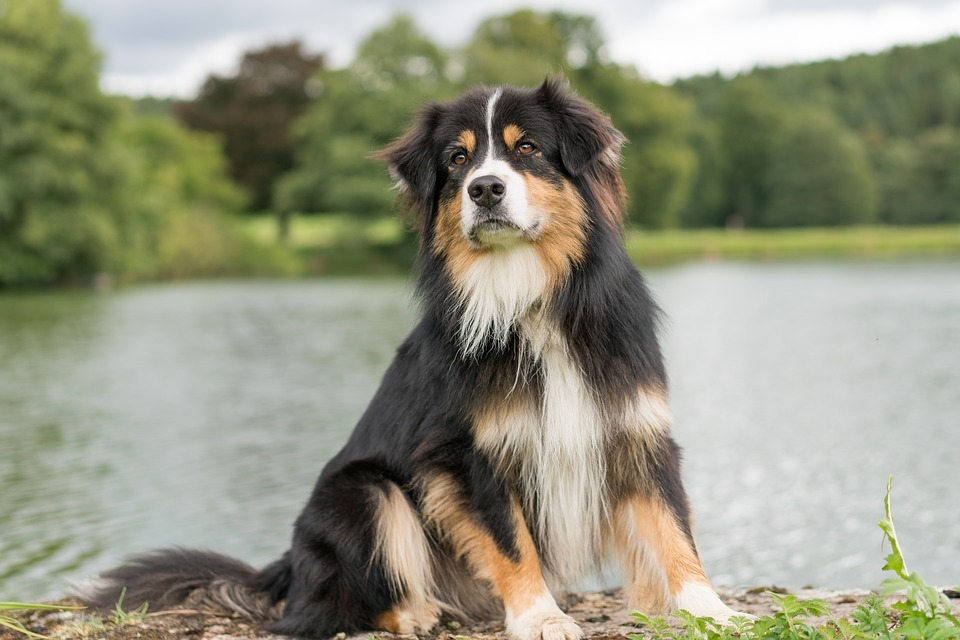Despite their name, the Australian Shepherd initially came from the western United States and not Australia during the Gold Rush in the 1840s. Australian Shepherds were initially bred to help herd livestock, and up until today, this breed remains to be a working dog. The Aussie, as they are often called, are always happy when they have a job to do. They are an excellent family companion mainly if you help them channel their intelligence and energy into dog sports and other activities.
History of the Australian Shepherd
Despite his name, this is an American-born breed. The Australian Shepherd was initially developed to help herd livestock for farmers and ranchers in the western United States. In fact, some Australian Shepherds still do that job until today. There are several theories on which breeds were mixed to create the Australian Shepherd. Experts say that it is likely that the Aussie’s ancestors are shepherd-type and collie dogs that came with imported shipments of sheep from Australia in the 1840s, which is why they got their name. Since then, breeders started to enhance their herding ability, which is why they end up creating a hard-working, intelligent, and versatile Australian Shepherd dog. This dog breed became extremely popular during post-World War II years. And that popularity went hand-in-hand with the people’s renewed attention in Western-style horseback riding. However, despite the widespread interest, the Australian Shepherd did not get recognized by the American Kennel Club until 1993. Today, the Australian Shepherd is still the same energetic, bright, and eye-catching dog that is useful to ranchers and farmers.
Characteristics of Australian Shepherds
Height: 20-23 inches in male, 18-21 inches in female
Weight: 50-65 pounds in male, 40-55 pounds in female
Life Expectancy: 12-15 years
Hypoallergenic: No
The male Australian Shepherd can grow up to 23 inches tall while females can be as much as 18 to 21 inches tall. On average, male Australian Shepherds weighs about 50 and 65 pounds, while females can be about 40 to 55 pounds. This dog breed is intended to be a functional working dog that is capable of herding robust stock for miles. They are bred to be assertive with livestock, which is why they have the tendency to take the dominant role in the home, especially if they don’t give them a firm leadership. This attitude makes the Australian Shepherd a poor choice for first-time or timid dog owners.
Just like any other herding dogs, Australian Shepherds are loyal to their family, and they are aloof with strangers. This is why they need early socialization training in order to expose them to different people, sounds, experiences, and sights while they are still young. This helps your Australian Shepherd to be a well-rounded dog when it grows.
Caring for Australian Shepherds
If you’ve got a yard, you have to ensure that it also has a secure fence so that your Australian Shepherd can dig under or jump over it. Please take note that their desire to be out in the open and herd something will overcome any concern he has about getting a mild shock, which is why installing an underground fence system will not work for them. We suggest that you walk your Australian Shepherd on a leash at least half-hour to an hour every day while giving them stimulating activities every day, such as a Frisbee game, fetch, a good run, or agility exercises. Take note that Australian Shepherd puppies don’t need as much hard training compared to adults. We suggest that you shouldn’t let the puppies run hard surfaces like concrete or even make them do a lot of jumping exercises until they’re a year old. This is because this could cause stress to their developing skeletal system and, even worse, cause future joint problems. This dog breed has the habit of chasing and nipping because it works well for herding sheep. However, it is bad manners when they apply it to humans as well as other pets. Which is why signing them up in obedience classes can help them curb their herding behavior, and satisfy their need for mental stimulation and work.

